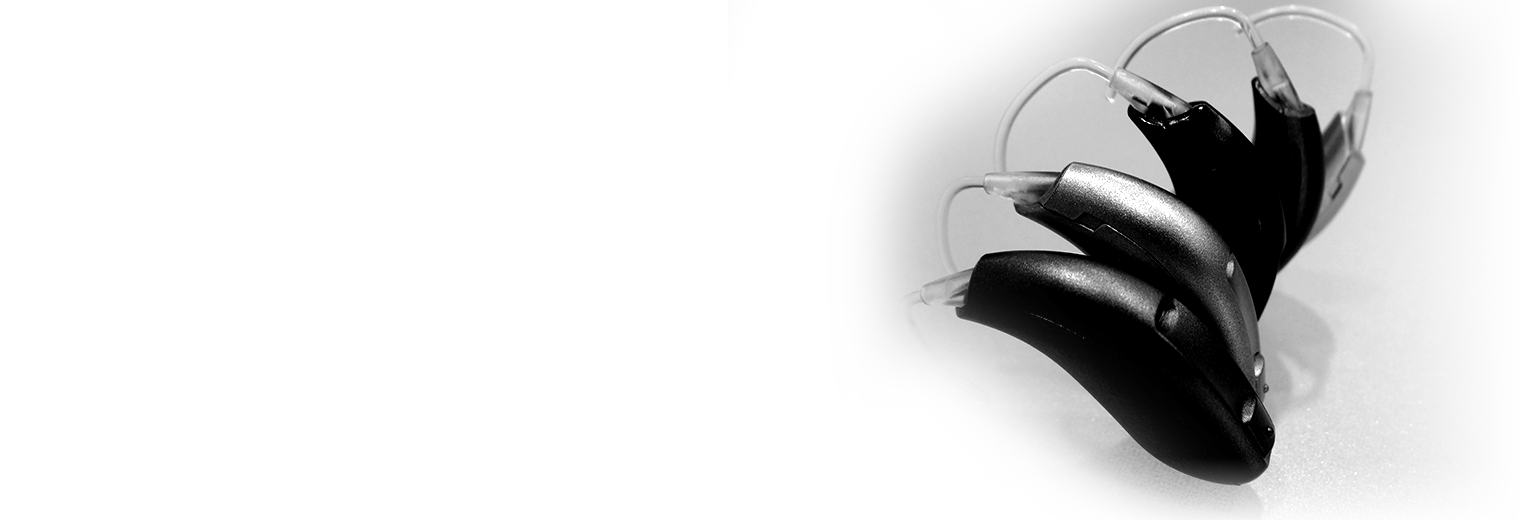|
www.HearingDirectory.ca |
Hearing aid types and styles
By Cara Jelinek, Aud (C), Reg. CASLPO Last updated on: February 24th, 2025 Hearing aids come in a variety of types and styles. Finding the right one for you depends on your hearing loss and personal preferences. Key points:
In the market for new hearing aids? When comparing hearing aids, you'll quickly learn there are a variety of hearing aid options to help improve your hearing. It can feel overwhelming. The best style of hearing aid for you depends on your type and degree of hearing loss, as well as the size and shape of your ear and your communication needs. A note on over-the-counter hearing aidsIn December 2024, Health Canada approved the hearing test and and over-the-counter hearing aid features on the AirPods Pro 2. It is expected to be available to Canadians some time this year. These are the first OTC hearing aids approved by the Canadian government. At the moment, it's unclear if the features will become immediately available across all provinces. It's also unclear if the government will start approving other OTC models from different manufacturers. The basic components inside all hearing aids
A hearing aid is a small electronic device, housed in a plastic case, that contains:
All these parts come together to help you hear sounds you would struggle to hear otherwise, even in noisy environments and against background noise. However, premium hearing aids may offer advanced features, including artificial intelligence and Bluetooth streaming. There are two main types of hearing aidsHearing aids can be divided into two categories based on the location of the processor: in-the-ear (ITE) and behind-the-ear (BTE). The best one for you is suitable for your hearing loss and lifestyle. You may prefer one with the latest technology, or a simpler model. 1. In-the-ear hearing aids
2. Behind-the-ear hearing aids
Let's take a look at the sub-categories of ITE and BTE hearing aids: Half-shell and full-shell hearing aids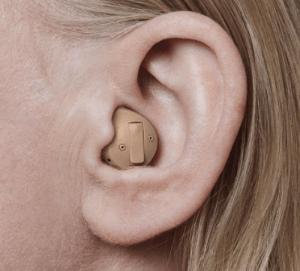
In-the-ear (ITE) hearing aids fill most or all of the outer ear canal opening. There are two styles – a “half-shell” which fills the bottom portion of the ear opening, or a “full shell” which as expected, fills the whole opening. The full-shell aids have more room on them to accommodate directional microphones and manual controls, such as a volume wheel or program button. Advantages:
Disadvantages:
In-the-canal (ITC) hearing aidsIn-the-canal (ITC) hearing aids sit in the canal portion of the ear. They are smaller and more discreet than the ITE style but still have space on the faceplate to accommodate directional microphones and manual controls. Advantages:
Disadvantages:
Completely-in-canal (CIC) and invisible-in-canal (IIC) hearing aids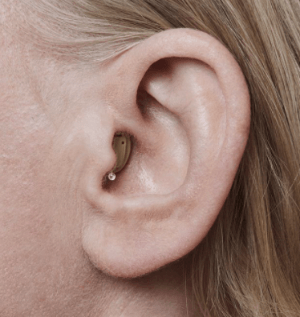
smaller. CIC and IIC aids are quite small and are fitted deeply into the ear canal. For this reason, they must be removed by using a removal cord. These styles are suitable for mild-to-moderate hearing losses. However, due to their small size, no directional microphones or manual controls are available, so sound quality may not be optimal. Advantages:
Disadvantages:
Behind-the-ear with earmold
used for more severe hearing loss. Traditional BTE aids are attached to a clear tubing and are fitted in the ear with a custom earmold. This earmold is made with an in-clinic impression by your hearing healthcare professional, just like a custom hearing aid. BTE aids can fit any type of hearing loss, from mild to profound. Because their body is bigger and sits behind the ear, the device can house more features and larger batteries. Children are typically fit with a BTE aid because of the programming flexibility and the fact that the earmold can be replaced as the child grows. Advantages:
Disadvantages:
Open-fit aids (receiver in the canal or ear)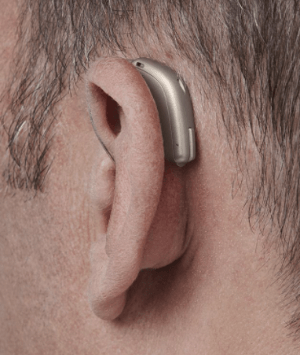
styles. The RIC (receiver-in-canal) or RITE (receiver-in-the-ear) styles are also known as “open fit” aids. This style has a speaker wire and dome or mold that connects and sits in the ear. This style is more discreet than a traditional BTE, and if the speaker wire gets damaged it is very easy to replace – without having to send the aid in for repair. This style is now available as a rechargeable battery option. Because of how many features it offers, it is one of the most popular hearing aid styles on the market. Advantages:
Disadvantages:
Which is the best hearing aid for me?Now that we have reviewed the sizes and styles available, let’s talk about some further considerations for you in the decision making process: Have you worn hearing aids before?If so – are you satisfied with your current aid style and features? If so, then continue with them. If you are looking for something more up-to-date, or if your hearing levels have changed, it’s important to discuss this with your hearing healthcare professional. How is your dexterity?If you have difficulty handling small items or you lose feeling in your fingertips, it is generally advisable to avoid smaller devices, such as IIC. ITE or BTE aids with molds are easier to insert/control. Generally, these aids have larger batteries (or rechargeable) which also means you would not need to change them as often as smaller batteries. Hearing aids with automatic features are also a good idea, so that you don’t have to use tiny volume wheels or buttons to adjust the sound on your devices. Alternatively, some hearing aids are also available with a remote control. What is your lifestyle like?
the RIC style of aid may be more your speed. Are you a social butterfly or a homebody? If your daily activities are restricted or if there are cognitive impairments, ITE or BTE aids with molds may be the best option. The ITE option is a self-contained unit making it easier to insert, and based on the larger size is easier to manipulate. A BTE aid with soft mold is also a good option, and both styles are simple for a caregiver to assist with. If you are a social butterfly and tech savvy, the RIC style of aid may be more your speed. These aids are usually Bluetooth enabled, which allow you streaming from your phone or other wireless devices. The RIC style is slimmer than a standard BTE aid and quite discreet, and many are rechargeable, which streamlines the maintenance. What is your hearing ability?When you have your hearing tested, your hearing healthcare professional will review and explain your results. If your hearing loss is fairly flat across all frequencies, a style that fills the ear canal with a mold or similar design would be appropriate to help amplify sounds across all pitches. If your hearing loss is mainly in the high frequencies – which is more common due to aging or noise exposure – then the RIC style of aid would be most comfortable. These open-fit aids allow natural low-frequency sounds in while amplifying the high frequency sounds you are missing. Hearing aids for profound hearing loss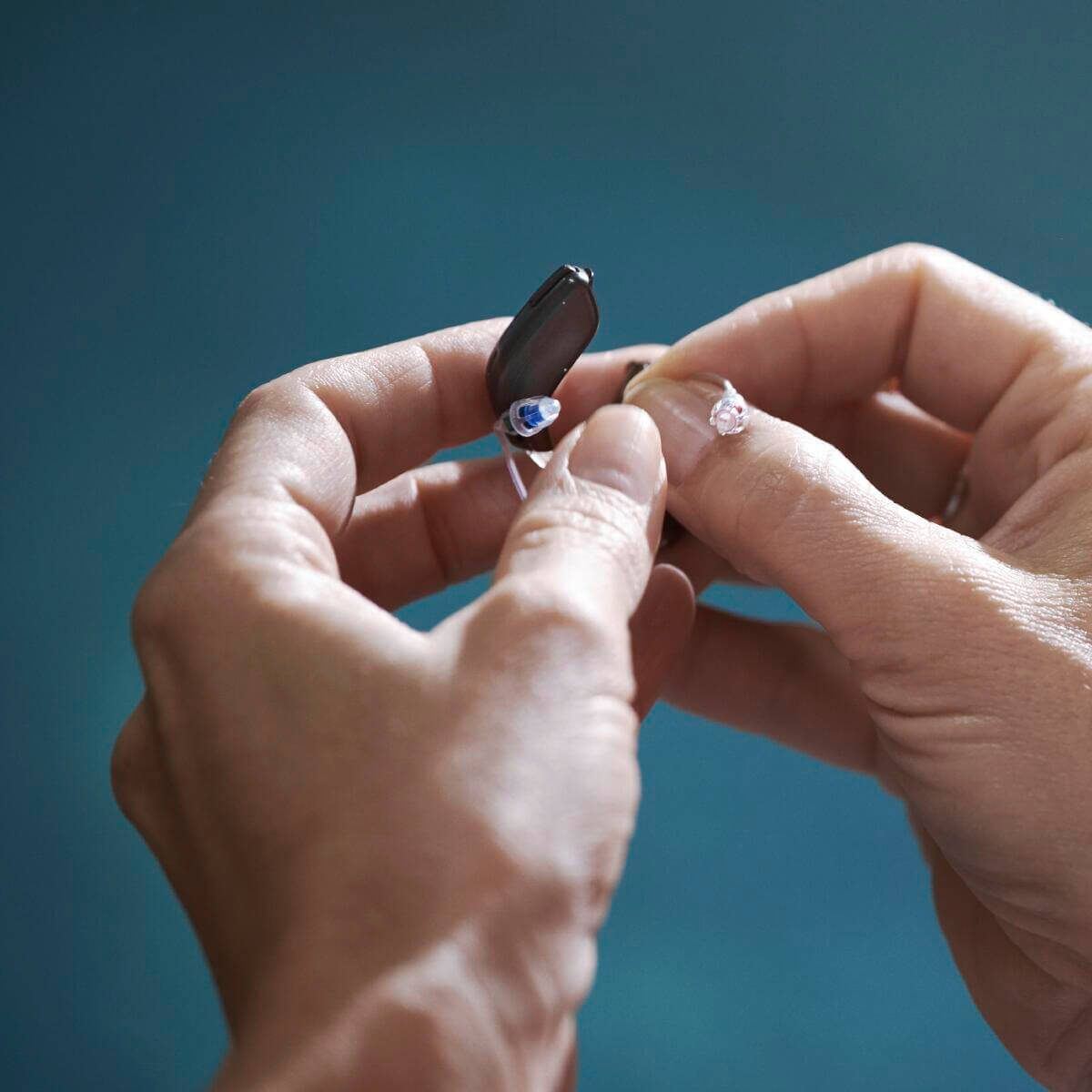
for people with profound hearing loss. If you have a severe to profound hearing loss, standard BTE aids with molds are advisable. These aids have the most powerful amplification and with the earmolds are least susceptible to moisture or wax damage in the ear canal. They also come with advanced features like directional microphones, feedback suppression, adaptive noise reduction and the ability to pair with wireless devices or public systems. In some cases, a cochlear implant may be the recommended treatment. Hearing loss in one earIf you have unilateral hearing loss (only one side) or an asymmetrical hearing loss (amount of loss is different on both sides), then a CROS or BiCROS system or bone anchored hearing system may be most suitable for you. Ultimately, every person's hearing loss needs are unique. That's why a hearing care provider's knowledge and guidance can be invaluable. They can not only provide testing and fitting, they are up-to-date on the latest technologies, which improve all the time. Cara Jelinek, Aud (C), Reg. CASLPOContributing author Cara Jelinek graduated with a master’s degree in audiology from the University of Western Ontario in 2003. She has over 15 years of clinical experience assessing and treating both adult and pediatric populations as well as actively participating in and leading community outreach, teaching and clinical management. Cara finds the variety and pace fulfilling and enjoys working with the public. She is also an active volunteer and coach in her local community.
You are reading about: Related topics
More information about hearing loss. Featured clinics near me
Schedule a hearing test with Healthy Hearing. Find a clinicThe Healthy Hearing Report |
|
www.HearingDirectory.ca |
Hearing aid types and styles
By Cara Jelinek, Aud (C), Reg. CASLPO Last updated on: February 24th, 2025 Hearing aids come in a variety of types and styles. Finding the right one for you depends on your hearing loss and personal preferences. |
 Are you located in the United States?
Are you located in the United States?

